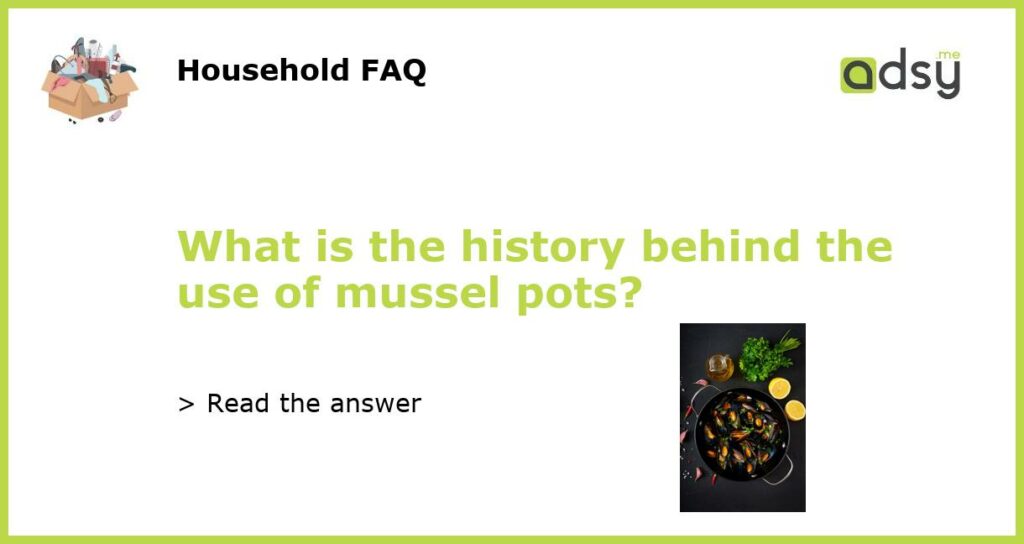The ancient history of mussel pots
Mussels have been a popular source of food for humans for thousands of years. In fact, archaeological evidence suggests that people have been eating mussels since at least 20,000 BC. The ancient Greeks and Romans were particularly fond of mussels, and they developed a variety of methods for cooking and preparing them.
The origins of mussel pots
Mussel pots, which are used to steam and cook mussels, have a relatively recent history. They were first developed in France in the 17th century, in the coastal towns of Brittany and Normandy. At the time, mussels were a popular food for sailors, who would collect them from the rocks along the shore and cook them in pots over a fire. The first mussel pots were made of copper and had a simple design, with a lid and handles for easy transportation.
The rise of industrial mussel farming
In the early 20th century, mussel farming began to take off in Europe and North America. Instead of collecting mussels from the rocks, farmers started growing them in large underwater beds. This led to an increased demand for mussel pots, as they provided an easy and efficient way to cook large quantities of mussels. By the mid-20th century, mussel pots had become a staple in households across Europe, particularly in countries such as France, Belgium, and the Netherlands.
Mussel pots today
Today, mussel pots are still widely used in Europe and other parts of the world. They are typically made of enamel or stainless steel and come in a range of sizes and designs. Some modern mussel pots are electric or gas-powered, allowing for precise temperature control and faster cooking times. In addition to being used for cooking mussels, mussel pots can also be used for steaming other types of shellfish, such as clams, oysters, and cockles.
The future of mussel pots
As mussel farming continues to grow in popularity, it is likely that mussel pots will continue to be an essential tool for cooking and preparing mussels. However, as with any traditional cooking method, there is also a growing interest in more sustainable and eco-friendly alternatives. One promising approach is the use of reusable silicone bags, which can be used to cook mussels without producing any waste. Whatever the future holds, it is clear that the humble mussel pot has a long and storied history, and will continue to be a beloved tool for cooking and enjoying one of the world’s most delicious seafood delicacies.






